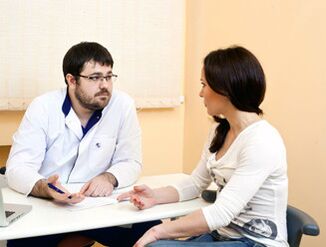According to WHO statistics, more than 85% of the world’s population suffers from various types of osteochondrosis. Such figures prove that almost every working person has experienced back discomfort at least once in his or her life. Especially often, due to the high load, the lumbosacral area suffers. But in addition to degenerative processes in the spine, a number of pathologies can cause unpleasant sensations in it. Back pain in the lumbar region is associated with impaired kidney and liver function and inflammation of the central nervous system. Moreover, it can signal the development of cancer and genitourinary infections.
Such figures prove that almost every working person has experienced back discomfort at least once in his or her life. Especially often, due to the high load, the lumbosacral area suffers. But in addition to degenerative processes in the spine, a number of pathologies can cause unpleasant sensations in it. Back pain in the lumbar region is associated with impaired kidney and liver function and inflammation of the central nervous system. Moreover, it can signal the development of cancer and genitourinary infections.
Causes of back pain in the lumbar region
There are dozens of factors that can cause discomfort in the lower back. A large number of them lead to the development of life -threatening pathologies. Therefore, at the first sign of back pain in the lumbar region, you should go to the hospital to find out the causes. The most common pathologies that give rise to such symptoms, according to physician observations, are:
- arthritis;
- osteochondrosis;
- impaired gastrointestinal tract function;
- intervertebral hernia.
Also, cramps often occur as a result of hypothermia. The sciatic nerve is the largest in our body. With hypothermia, it can be pinched, resulting in severe pain. In addition, common factors that contribute to the occurrence of discomfort in the lumbosacral area are:
- pressure;
- passive lifestyle;
- weight lifting;
- trauma;
- poor nutrition.
Back pain in the lumbar region may indicate urolithiasis. Ignoring such pathologies is known to be life threatening. In addition, similar symptoms are observed with serious venereal disease. Keep in mind that unpleasant sensations of this nature do not always indicate disease. Cramps in the lumbar region are considered normal if they occur for the following reasons:
- pregnancy;
- menopause;
- menstruation.
But even in such cases, when pain appears, it is better to consult a specialist. However, persistent cramping usually indicates the development of an inflammatory process and is often associated with impaired blood circulation. More often than others, overweight people suffer from these symptoms.
Diagnostics
In total, there are more than 40 causes that can cause pain in the back and lumbar region. Even an experienced doctor cannot determine the pathology that causes such symptoms without a series of examinations. Typically, for discomfort in the lower back, doctors use the following diagnostic methods to make a diagnosis:
Basic methods for diagnosing girdle back pain in the lumbar region
| Diagnostic techniques | Accuracy |
| Lumbar X-ray | 87-92% |
| Lumbar MRI | 97% |
| Ultrasound of the pelvic organs | 85-90% |
| Blood and urine tests | 92% |
| Electroneuromyography | 88-94% |
Also, in case of pathological symptoms of the gastrointestinal tract and genitourinary system, endoscopic examination of the intestine or uterus is required. If you suspect a neoplasm, a biochemical blood test is also performed.
Which doctor should I go to
When the first unpleasant sensation appears in the lumbosacral area, you should immediately contact a therapist. He or she will provide a referral for some initial checkups and tell you which specialist you should contact for further treatment. The following doctors can usually treat these symptoms:
- Surgeons
- Neurologist
You may also need to consult a nephrologist, gastroenterologist or traumatologist. Specialists will quickly determine the possible cause of back pain in the lumbar region. The initial diagnosis should be confirmed by test results and anamnesis. While there are various expert profiles, there are a number of questions each are asked:

- Has the patient suffered a back injury in the last few months?
- Is the patient hypothermic?
- Do relatives of the patient suffer from degenerative spinal disease?
- What kind of life does a person go through?
- Does the patient have a chronic illness or allergy?
Also, the doctor will certainly explain how long ago there was an unpleasant sensation in the lower back, he would ask, after what action strengthens the cramps? Based on the information received, he will be able to determine the nature of the disease and the most effective way to get rid of unpleasant symptoms.
Treatment
To relieve the patient’s cramps, doctors use physical therapy and physical therapy procedures. In some cases, for example, when the discomfort is caused by pathology of the gastrointestinal tract, experts even prescribe a diet. Often, the treatment of back pain in the lumbar region involves taking the following types of medications:
- non-hormonal anti-inflammatory drugs;
- antispasmodic;
- general and local action painkillers;
- vitamin.
It should also be noted that if the discomfort is associated with degenerative processes in bone tissue, then the elimination of the disease is not possible without taking chondroprotectors. Physiotherapeutic procedures that should be prescribed in the treatment of back pain in the lumbar region include:
- UHF;
- relaxing baths;
- electrophoresis;
- laser therapy.
Specially designed massage therapies and exercises are also recommended. Such a procedure helps relieve inflammation and strengthens the back muscles, which contributes to the patient’s speedy recovery.
Traditional treatment methods
Sometimes the effect of a course prescribed by a specialist can be enhanced with the help of natural remedies. But the drug can only be used after obtaining the consent of the attending physician. For the most popular traditional treatment methods:
- Compress lemon and apple cider vinegar.Mix the ingredients in a one-to-one ratio, soak a woolen cloth in it and apply on back pain to get rid of inflammation quickly.
- Dandelion alcohol infusion.Mix 0, 5 liters of dandelions with 500 ml of vodka. Helps warm the back well.
- The broth.Mix 3 teaspoons of parsley root with 500 ml of water. Boil and take 3 times a day to prevent osteochondrosis.
Prophylaxis
As you know, it is better to avoid a problem than to fix it. Therefore, to prevent back pain, some preventive measures must be followed. The main ones include:
- increase the amount of calcium -rich foods in your diet;
- lose excess weight;
- take a walk or jog every day (avoid an inactive lifestyle);
- exclusion from the diet of smoked meats, which increases the load on the liver and contributes to the development of degenerative processes in bone tissue.
However, if it is not possible to prevent back pain in the lumbar region, the cause of this phenomenon should be known as soon as possible.























